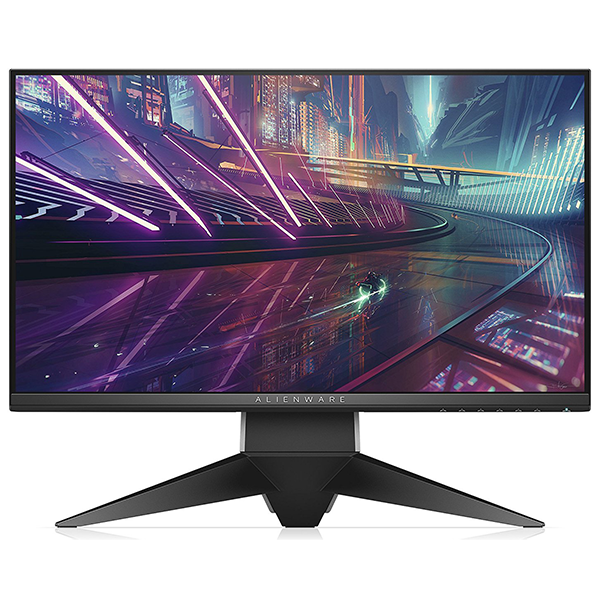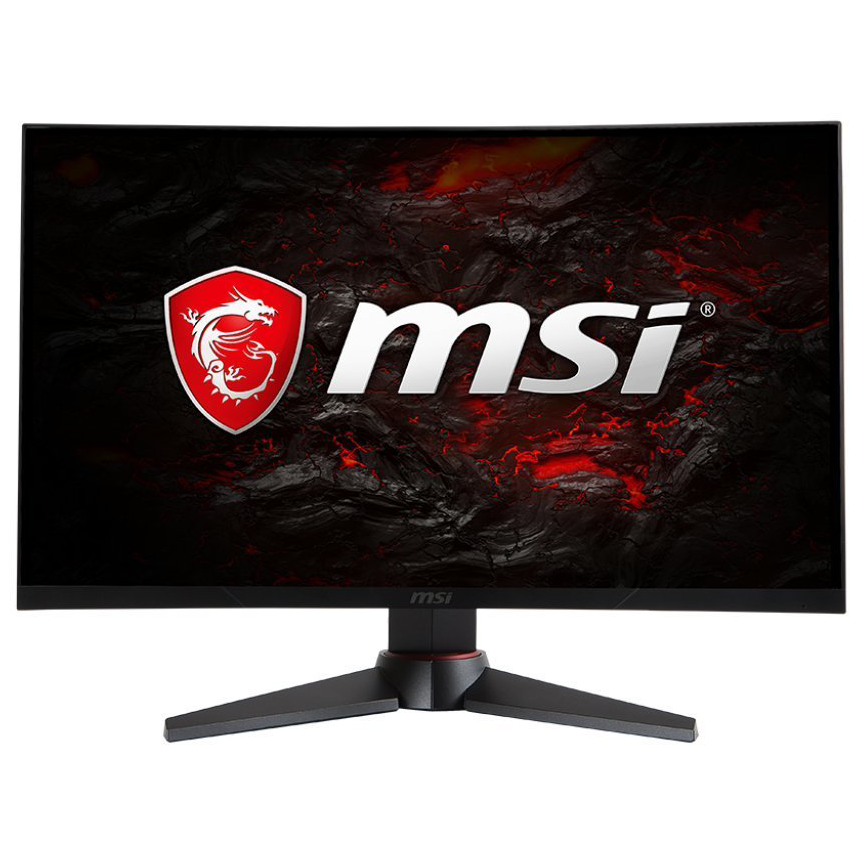Aorus KD25F 240 Hz Gaming Monitor Review: Breaking Our Benchmark Records
Why you can trust Tom's Hardware
Brightness and Contrast
To read about our monitor tests in-depth, please check out Display Testing Explained: How We Test Monitors and TVs. Brightness and Contrast testing is covered on page two.
Uncalibrated – Maximum Backlight Level
The KD25F runs with an elite group of super-fast monitors. So for comparison, we rounded up our most recently tested displays that run at 240 Hz: Alienware’s AW2518H, AOC’s AG251FZ and ViewSonic’s XG2530. We also threw in two 144 Hz screens, ViewSonic’s XG240R and MSI’s MAG24C.
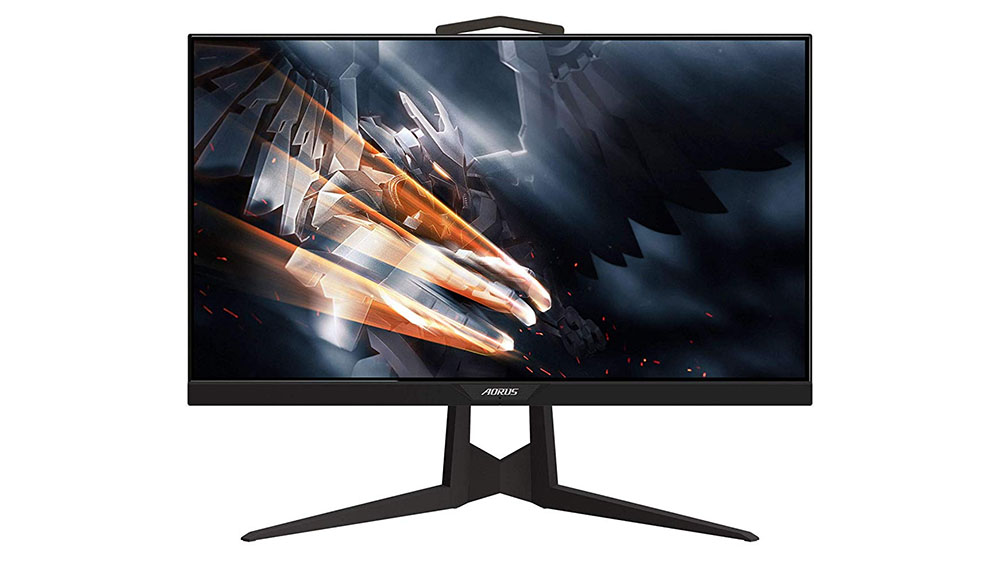
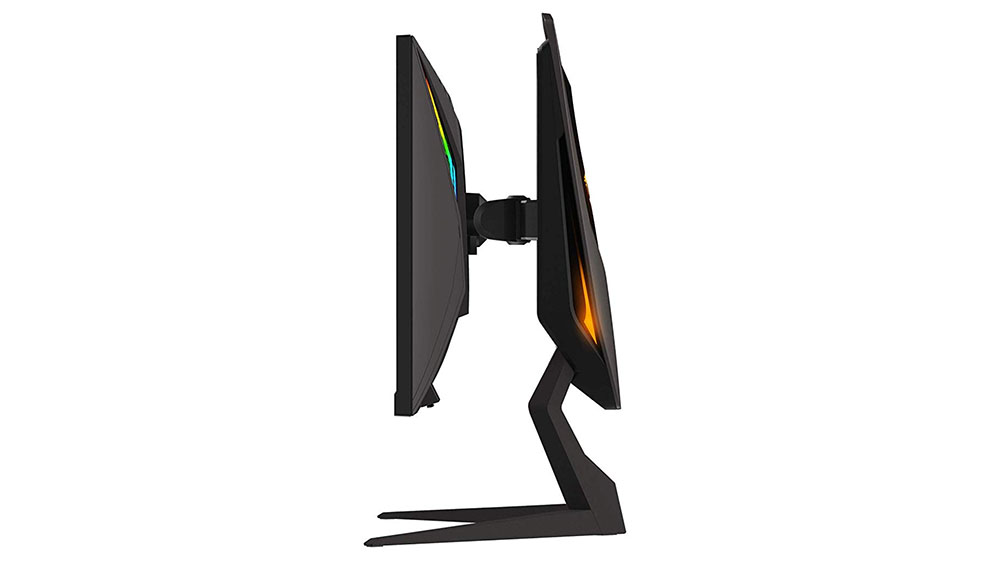
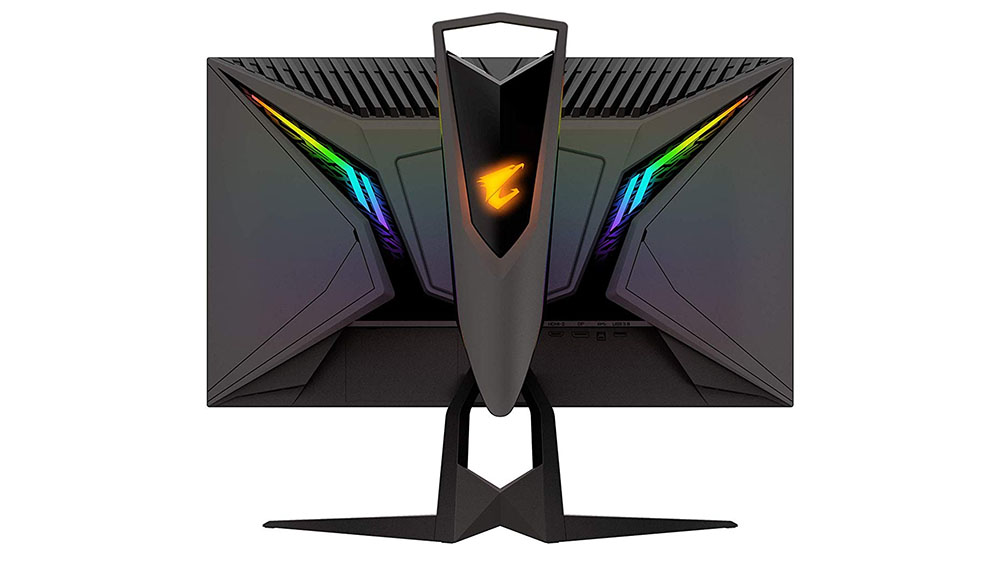
Clearly, the 240 Hz screens are very bright. They’re all based on the same AU Optronics panel, so that stands to reason. There aren’t too many environments where you’ll need 400 nits, but if you have some sunlit windows, you might find it an asset. The KD25F beats Gigabyte’s 400-nit claim with over 404 nits.
Of course, that doesn’t do wonders for black levels, which for the KD25F are proportionally high, like the rest of the TN monitors. Only the VA-based MSI boasts a true black. The other screens look more gray than black. However, at a more realistic setting of 200 nits, the effect was mitigated. The KD25F’s resulting contrast is within striking distance of the TN average at 947.9:1.
After Calibration to 200 nits
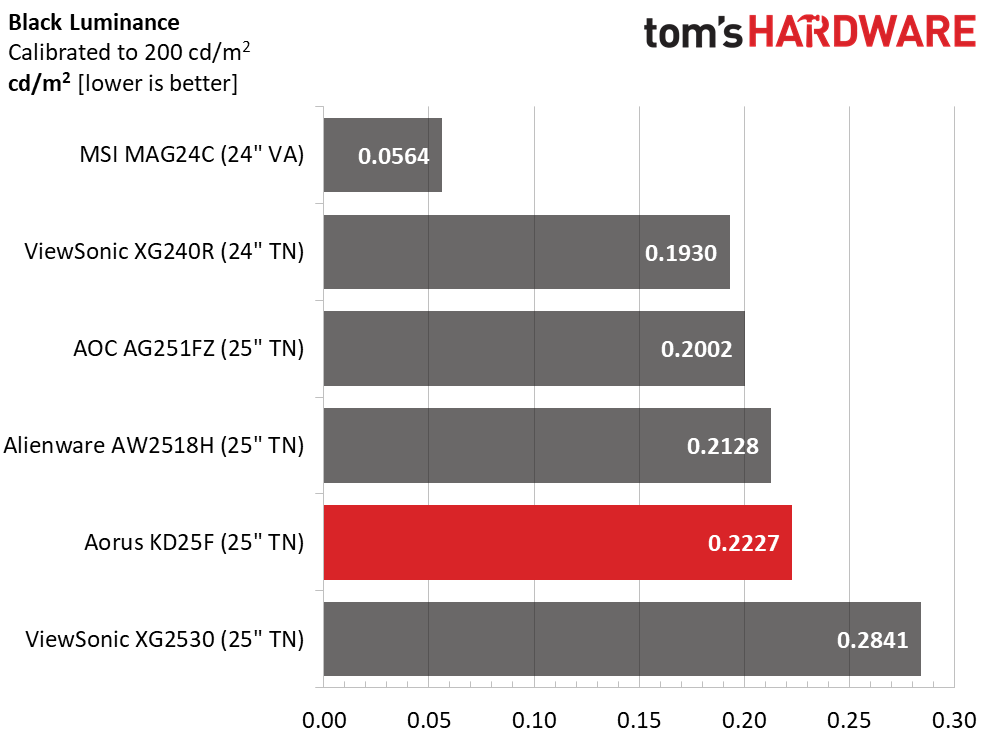
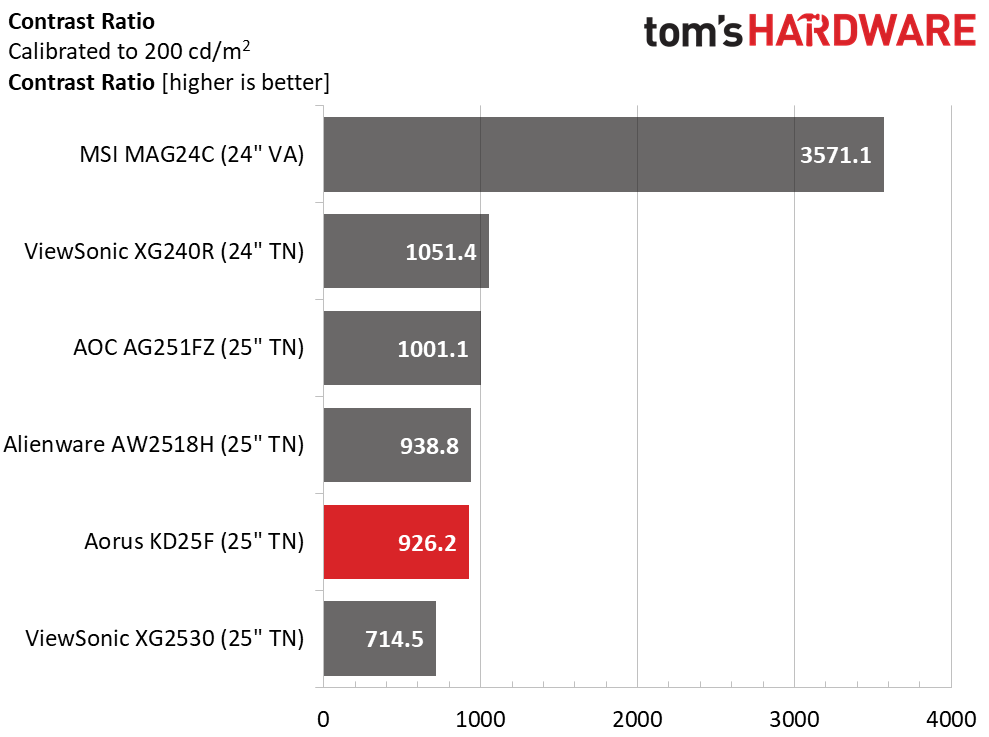
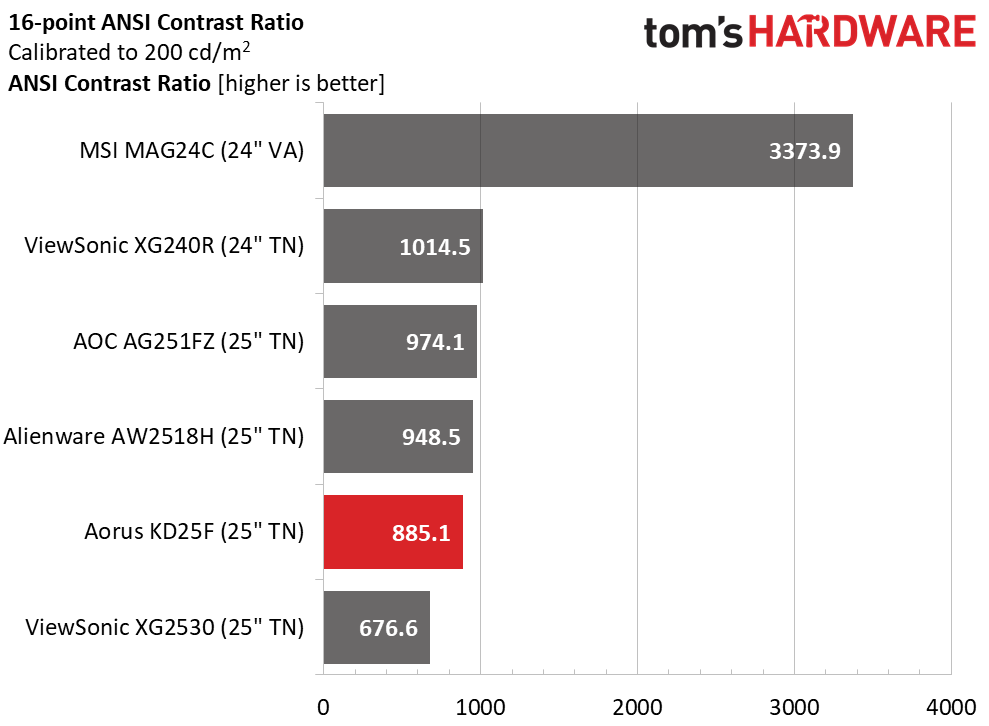
After calibration to 200 nits, the KD25F ranked fifth in our black levels test, but moved up one spot in the contrast test. Adjustments made to gamma and white balance did not significantly reduce dynamic range, so we think the gain in color accuracy was worth losing a few contrast points. The increased color saturation afforded by our gamma adjustment visibly improved picture quality and perceived resolution.
The KD25F’s ANSI contrast score also net it a fifth-place finish among our super-fast gaming monitors. If ultimate picture quality is your goal, you can’t go wrong with the MSI MAG24C with its VA panel and extended color gamut. But if you want ultimate speed, one of the 240 Hz models here is a better choice.
MORE: Best Gaming Monitors
Get Tom's Hardware's best news and in-depth reviews, straight to your inbox.
MORE: How We Test Monitors
MORE: All Monitor Content
Current page: Brightness and Contrast
Prev Page Features and Specifications Next Page Grayscale, Gamma and Color
Christian Eberle is a Contributing Editor for Tom's Hardware US. He's a veteran reviewer of A/V equipment, specializing in monitors. Christian began his obsession with tech when he built his first PC in 1991, a 286 running DOS 3.0 at a blazing 12MHz. In 2006, he undertook training from the Imaging Science Foundation in video calibration and testing and thus started a passion for precise imaging that persists to this day. He is also a professional musician with a degree from the New England Conservatory as a classical bassoonist which he used to good effect as a performer with the West Point Army Band from 1987 to 2013. He enjoys watching movies and listening to high-end audio in his custom-built home theater and can be seen riding trails near his home on a race-ready ICE VTX recumbent trike. Christian enjoys the endless summer in Florida where he lives with his wife and Chihuahua and plays with orchestras around the state.
-
AlistairAB The Alienware one I bought seemed defective, as OD error was atrocious at 240hz and wasn't adjustable regardless of OD setting. Setting the monitor back to 144hz fixed all the problems. I hope the Aorus isn't the same.Reply
Lipstick on a pig somewhat, as we already have a vastly superior and responsive technology, OLED. Would kill for a 25" 240hz OLED monitor instead, with even faster response times standard. -
thealmightyeyeball I have the Alienware AW2518HF. It is flawless as far as freesync is concerned. It is also about 150 dollars less.Reply
I would get the Alienware. -
Theodore Juices There's an updated version of the AOC AG251FZ, the AG251FZ2. I know because I just owned it for a month before returning it for reasons unrelated to its performance. Why didn't you compare this monitor to that one instead? That would have been much more useful.Reply -
zeekez I just got this monitor, I love it so far but I have a few questions, mainly, does Aim Assist need to be on for the fastest input speed? I've noticed with Aim Assist it dims the screen considerably. I was just curious if the config given for the best color was with it on or off.Reply -
Demi9OD Replyzeekez said:I just got this monitor, I love it so far but I have a few questions, mainly, does Aim Assist need to be on for the fastest input speed? I've noticed with Aim Assist it dims the screen considerably. I was just curious if the config given for the best color was with it on or off.
I think Aim Assist is the Black Frame Insertion feature. You don't need it on and it probably slows down input speed a little bit.
